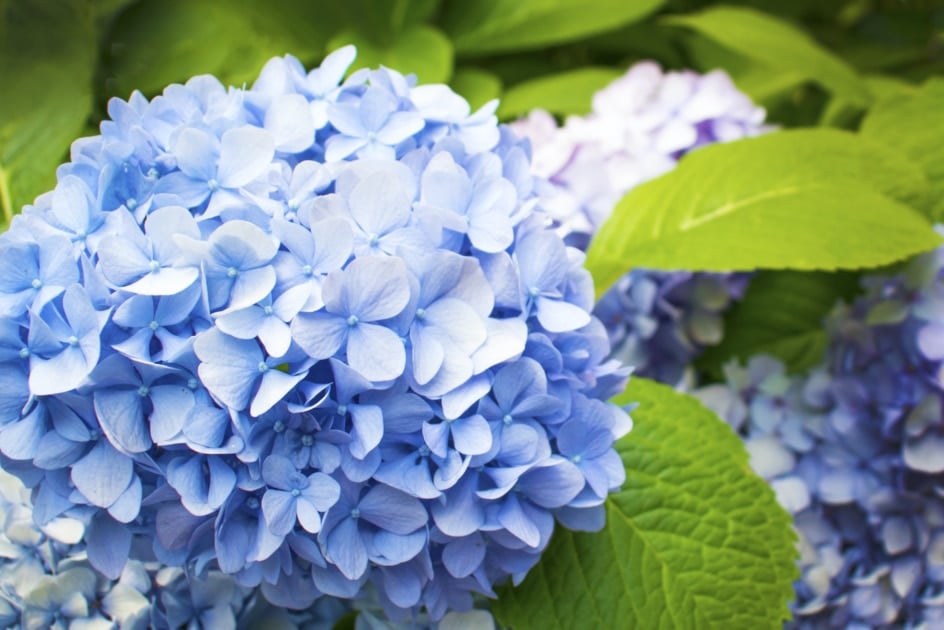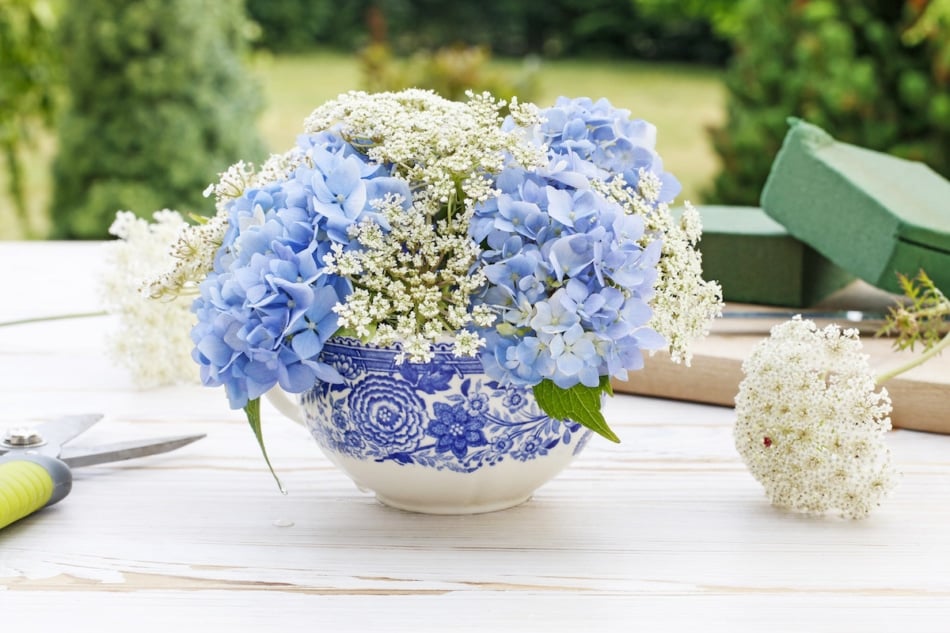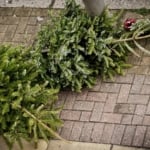Hydrangea Not Blooming? Here’s What To Do

Is your hydrangea not blooming? This is a common issue, and the good news is that it’s usually fixable. One of our dear readers expressed frustration with her 4-5 year old hydrangea not blooming (from a comment left on our Planting Calendar), so we’re sharing some valuable insights and recommendations. Here are five things that may be going wrong if your hydrangeas are not blooming as well as tips. Please leave a comment to let us know if this information helps you.
1) Pruning at the Wrong Time
Pruning at the wrong time is one of the most common culprits. First, identify your hydrangea variety to understand its pruning needs. Hydrangeas are classified by whether they bloom on “old wood” (last year’s growth) or “new wood” (this year’s growth). Here are types of hydrangeas and their pruning needs:
- Old Wood Bloomers: Bigleaf hydrangeas (Hydrangeamacrophylla), oakleaf hydrangeas (Hydrangeaquercifolia), climbing hydrangeas, and mountain hydrangeas. These should only be pruned immediately after they finish flowering in the summer. Never prune an “old wood” hydrangea in the fall, winter, or early spring, because you would be cutting off the buds for the upcoming season!)
- New Wood Bloomers: Smooth (Hydrangeaarborescens) and panicle (Hydrangeapaniculata) hydrangeas may be pruned in late winter or early spring because they will produce new growth and new buds later in the season.
- Reblooming Varieties: Some newer varieties, like “Endless Summer,” bloom on both old and new wood. These typically require little to no pruning.
If you’re unsure which hydrangea variety you have, it’s best to stop pruning for a year or two and see if that helps.
Any questions? Contact [email protected]
2) Lack of Sun or Too Much Sun
Hydrangeas need the right amount of light to produce flowers. Most hydrangeas thrive with morning sun and afternoon shade.
Observe your plant’s location throughout the day. If it’s in a very shady spot, consider transplanting it to a sunnier location (the best time for this is in the fall or early spring). If it’s getting scorched by the afternoon sun, you could add some shade with a shade cloth or move it.
- Too much shade: While they appreciate protection from intense heat, too much shade can prevent them from forming flower buds.
- Too much sun: Direct, hot afternoon sunlight can stress the plant, causing it to conserve energy for survival rather than flowering. This is especially true for bigleaf hydrangeas in warmer climates.

3) Improper Fertilization
If your soil is lacking in nutrients, the plant may not have the energy to flower. However, sometimes, more isn’t better when it comes to fertilizer.
- Too much nitrogen: Fertilizers with a high nitrogen content (the first number in the N-P-K ratio) can prioritize lush, leafy growth over blooms. Use a slow-release, balanced fertilizer (like a 10-10-10) in the early spring as new growth appears. You can also look for a “bloom booster” fertilizer with a higher phosphorus content (the middle number).
- Avoid fertilizing after August to prevent late-season growth that could be damaged by frost.
4) Winter Damage
If you live in a colder climate, the extreme cold of a harsh winter or a late spring frost can kill the flower buds on “old wood” hydrangeas, even if the plant itself survives. The buds form in the fall and must make it through the winter to bloom the following summer. To protect your plant, you can cover it with a thick layer of mulch or burlap before frost. See first frost dates for your region.
5) Other Factors to Consider
- Watering: Hydrangeas are “water hogs.” Ensure your soil is consistently moist but not soggy. Deep watering a few times a week is better than frequent, shallow watering.
- Plant is still establishing: Even at 4-5 years old, a hydrangea may still be putting more energy into developing a strong root system than into flowering. Be patient!
- Deer or other animals: Deer love to eat the tender new growth, buds, and flower heads, which can completely eliminate your flowers for the season. Here are 10 Flowers that deer don’t like.
- Soil pH: While it primarily affects the color of the blooms, extreme pH levels can sometimes impair nutrient absorption and affect flowering. Learn more about soil in our Ultimate Guide to Natural Fertilizers.
By carefully considering these factors and making some adjustments, you should be able to encourage your beautiful hydrangea to finally show off its blossoms.
Join the Discussion
Do you have any tips for making hydrangeas bloom to share with our community here?
We would love to hear about your experience and wisdom!
Also, please feel free to share photos of your beautiful hydrangeas in the comments!














My hydrangea has not bloomed at all. Should I cut it back in the fall, winter or early Spring?
Hi Linda, Before pruning your hydrangea, it is important to know which type you have. If you aren’t sure, you can upload a couple of photos here and we will do our best to help you identify it! Be sure to get a clear shots of the leaves and trunk/stems.